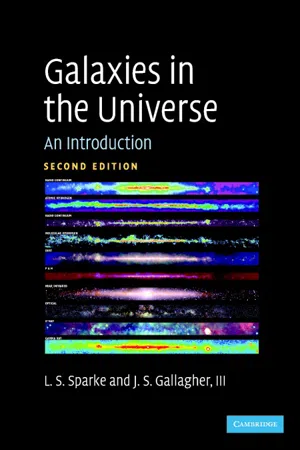
- English
- PDF
- Available on iOS & Android
About this book
This extensively illustrated book presents the astrophysics of galaxies since their beginnings in the early Universe. It has been thoroughly revised to take into account the most recent observational data, and recent discoveries such as dark energy. There are new sections on galaxy clusters, gamma ray bursts and supermassive black holes. The authors explore the basic properties of stars and the Milky Way before working out towards nearby galaxies and the distant Universe. They discuss the structures of galaxies and how galaxies have developed, and relate this to the evolution of the Universe. The book also examines ways of observing galaxies across the whole electromagnetic spectrum, and explores dark matter and its gravitational pull on matter and light. This book is self-contained and includes several homework problems with hints. It is ideal for advanced undergraduate students in astronomy and astrophysics.
Frequently asked questions
- Essential is ideal for learners and professionals who enjoy exploring a wide range of subjects. Access the Essential Library with 800,000+ trusted titles and best-sellers across business, personal growth, and the humanities. Includes unlimited reading time and Standard Read Aloud voice.
- Complete: Perfect for advanced learners and researchers needing full, unrestricted access. Unlock 1.4M+ books across hundreds of subjects, including academic and specialized titles. The Complete Plan also includes advanced features like Premium Read Aloud and Research Assistant.
Please note we cannot support devices running on iOS 13 and Android 7 or earlier. Learn more about using the app.
Information

Table of contents
- Cover
- Half-title
- Title
- Copyright
- Contents
- Preface to the second edition
- 1 Introduction
- 2 Mapping our Milky Way
- 3 The orbits of the stars
- 4 Our backyard: the Local Group
- 5 Spiral and S0 galaxies
- 6 Elliptical galaxies
- 7 Galaxy groups and clusters
- 8 The large-scale distribution of galaxies
- 9 Active galactic nuclei and the early history of galaxies
- Appendix A Units and conversions
- Appendix B Bibliography
- Appendix C Hints for problems
- Index